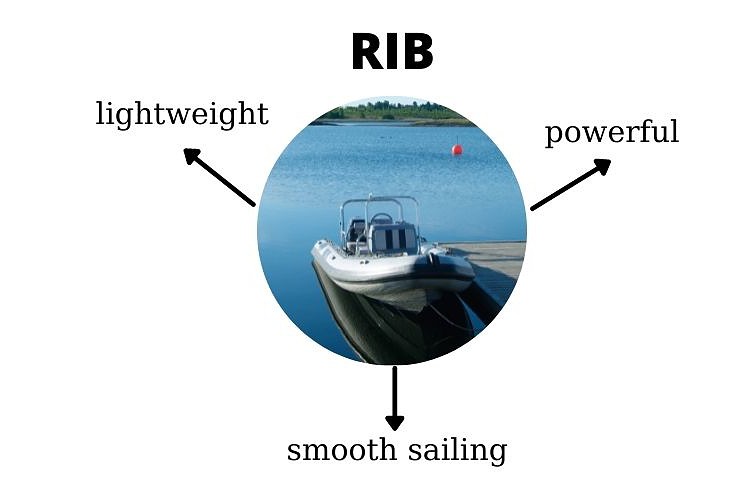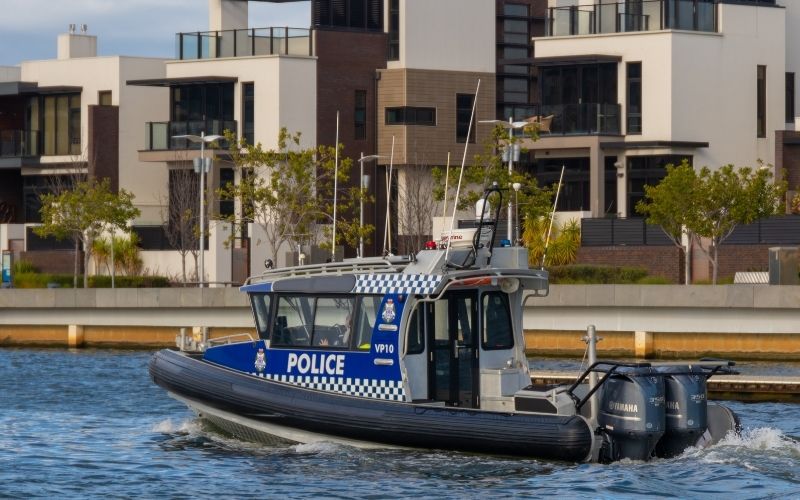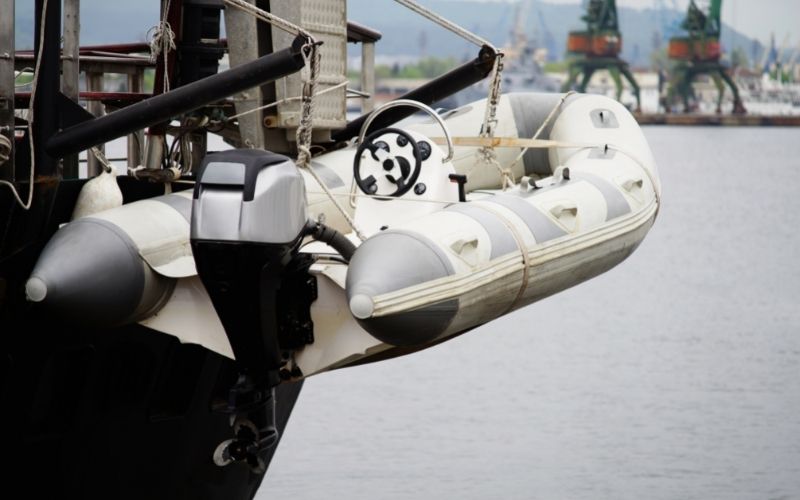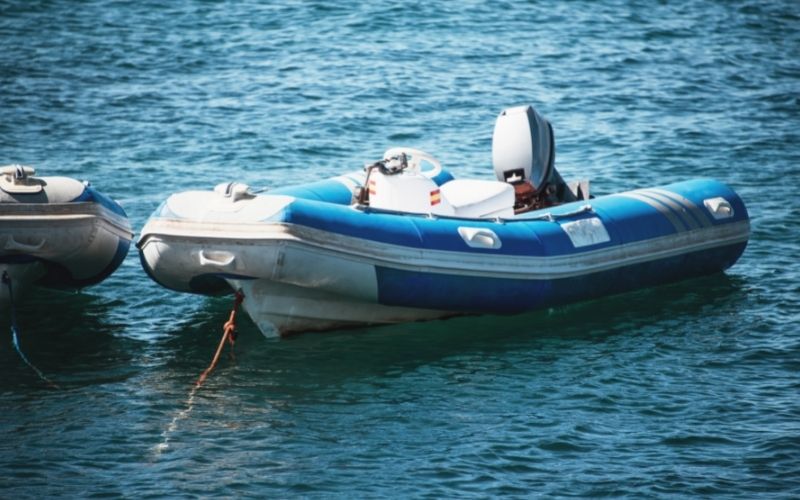Have you ever wondered how fast a rigid inflatable boat is? Maybe your concern is whether the boat will get you to your destination fast enough-or maybe you are afraid that you could be cruising too fast.
Here is everything you need to know about the speed of a RIB boat and the factors that influence how fast these crafts can move.
Table of Contents
Reasons Why Rigid Inflatable Boats are Faster

Perhaps you have come across a RIB zooming past you or have heard from a friend that a Rigid Inflatable Boat (RIB) should be your boat of choice if you are looking for speed and performance.
The major question therefore is, why are rigid inflatable boats faster than their non-inflatable counterparts?
Lightweight Design
It makes a lot of sense that if you are carrying a light load, then you tend to move faster. The same concept also applies to boat designs.
The design of rigid inflatable boats is largely made up of lightweight inflatable tubes. This is what makes this kind of boat faster than wood, fiberglass, or aluminum boats.
The lightweight design of RIB boats not only affects the speed but you will be happy to know that these boats also require less horsepower to reach maximum speeds.
More Powerful Engine
RIB boats are equipped with larger and heavier engines compared to non-inflatable boats. A powerful engine is what allows these boats to offer more speed.
This however is not surprising considering that rigid inflatable boats were originally designed for rescue and military use.
These activities require high-performance boats that can deliver the expected results when time is of the essence.
Smooth Sailing
Another reason why RIB boats are faster is because of their ability to navigate through rough waters. Typically, you would have to slow down as you approach turbulent waters when using a non-inflatable boat.
For rigid inflatable boats, however, the inflatable tubes give the boat stability as it cuts through water while still cruising at top speeds.
How Fast are Inflatable Boats?

If you are cruising on a fully inflatable boat, you will find that your boat might not exceed a speed of five miles per hour. The estimated maximum speed for a fully inflatable boat is 10 miles/hour. There is the likelihood of the boat tearing apart once it exceeds this maximum speed.
For rigid inflatable boats, however, the situation is a little different. RIB boats, especially those with a metallic bottom, can move much faster on water with most of these crafts reaching speeds of up to 35 miles per hour.
How Fast does a RIB Boat Go?

RIBs are designed to reach very high speeds. For example, high-performance RIB boats have the ability of reaching speeds of between 40-70 knots (74 to 130km/h).
A standard RIB with a horsepower of 100 (82 kW) engines and a passenger capacity of six can reach a maximum speed of 30 knots (56 km/h).
It is worth noting that the speed is dependent on the size and weight of the boat. The speed of RIB boats is one of the key reasons why they are popular for use in the military. These boats are also common for commercial use where the distance of travel is short.
How Fast are RIBs With Outboard Motors?

Rigid inflatable boats and outboard motors are a complex subject since most inflatable boats are primarily designed as trolling motors as opposed to being outboard motors.
The reason for this is because RIB boats might not have the required space to mount the motor or the capacity to support the weight.
If your RIB boat can be used with an outboard motor, chances are that you will not be able to move as fast as you would want. The average speed you can move on a standard inflatable boat with an outboard motor is between 5 and 10 miles per hour.
On a RIB boat, however, you can move much faster when the outboard motors are mounted appropriately.
How Fast Can a Rigid Inflatable Boat Move When Towing Another Vessel?

In some instances, rigid inflatable boats are used as tenders for larger vessels. This requires these boats to maintain a certain distance between them and the tenders.
The question most people ask themselves is how fast should you move while towing a tender, and still be able to do it safely without ripping your RIB boat apart?
To some extent, how fast you should move depends on the towing conditions. With the conditions being constant, however, the towing speed by RIB boats can reach up to 25 miles per hour.
Keep in mind that you need to use the right rope length and tow harness for maximum speed.
How Safe are RIBs?

Safety is one of the top priorities when you are out on the waters. Because of their inflatable tubes, RIBs are very safe for use. This means that sinking should be the least of your concerns when you are out on the waters for a fishing expedition or other recreation activities.
Even if the water penetrates into the hull, the inflatable sides will enable the boat to remain afloat. In the event that the inflatable tubes get punctured, the hull is equally capable of keeping the boat above water.
This is in sharp contrast with fully-inflatable boats where a single puncture is a recipe for disaster or full solid boats where a crack on the hull can bring the entire boat down.
Final Thoughts
The great thing about RIB boats is that they can be fast-probably faster than you can imagine. As long as the boat is fitted with the right motor, you should expect maximum speed and performance on the water.
Your safety on the water should always be one of your top priorities. Whenever you feel like you are moving too fast on your RIB boat, slow down and move at a speed you are more comfortable with.
After all, it is not worth putting your life at risk just so that you can get to your destination faster.

I created this site to help people – to help you – with your boat problems. Instead of helping one person at a time, I want this website to be the “one-stop-shop” for everyone’s boating concerns. Read more.

